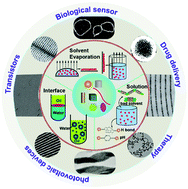Self-assembly of colloidal inorganic nanocrystals: nanoscale forces, emergent properties and applications
Abstract
The self-assembly of colloidal nanoparticles has made it possible to bridge the nanoscopic and macroscopic worlds and to make complex nanostructures. The nanoparticle-mediated assembly enables many potential applications, from biodetection and nanomedicine to optoelectronic devices. Properties of assembled materials are determined not only by the nature of nanoparticle building blocks, but also by spatial positions of nanoparticles within the assemblies. A deep understanding of nanoscale interactions between nanoparticles is a prerequisite to controlling nanoparticle arrangement during assembly. In this review, we present an overview of interparticle interactions governing their assembly in a liquid phase. Considerable attention is devoted to examples that illustrate nanoparticle assembly into ordered superstructures using different types of building blocks, including plasmonic nanoparticles, magnetic nanoparticles, lanthanide-doped nanophosphors, and quantum dots. We also cover the physicochemical properties of nanoparticle ensembles, especially those arising from particle coupling effects. We further discuss future research directions and challenges in controlling self-assembly at a level of precision that is most crucial to technology development.



 Please wait while we load your content...
Please wait while we load your content...